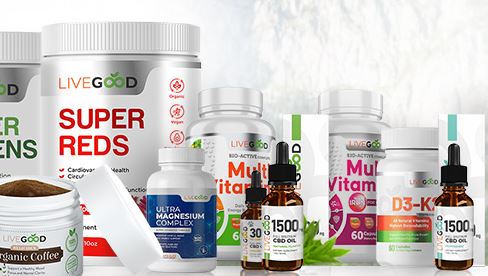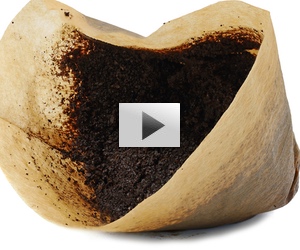Potatoes and “White Foods” Not So Bad After All, but they always get the blame.
by Mike Geary , Certified Nutrition Specialist, Certified Personal Trainer
Author of best-sellers: The Fat Burning Kitchen & The Top 101 Foods that FIGHT Aging
Today I’d like to start a little discussion about carbohydrates… and in particular, “white foods” as well as potatoes. One reason being I wanted to mention this is because so many health and fitness professionals trash talk potatoes about being a bad carbohydrate choice because of the high glycemic index. Some even say such ridiculous things as “avoid any and all white carbohydrates”.
Ok, now while I certainly agree that white bread and refined white sugar are two of the worst things, we can be feeding our bodies, I do not agree with avoiding any and all “white carbohydrates”. Now I know all the buzz lately has been about colorful foods and the protective antioxidants that they contain. They tell you to focus on colors and stay away from white.
“White Foods” are not necessarily always the enemy
It is true that colorful foods are great, but it is a big mistake to specifically avoid white foods! There are plenty of white foods that have specific nutrients that are hard to find elsewhere. Let us look at a few examples…
Onions & Garlic
What about onions and garlic? They are both white and they are chock full of protective phytonutrients, vitamins, and trace minerals that are not easy to find elsewhere in a normal diet… such nutrients as allicin, quercetin (an important flavonoid), chromium, and other unique anti-inflammatory nutrients.
In fact, onions are so powerful for our health, that one study of centenarians (people that live to over one hundred years old) identified that a common thread of these amazingly healthy individuals was that they ate a lot of onions throughout their lives. And we also know that garlic is one of the most powerful substances for a strong immune system, among other qualities.
Cauliflower
Another example of something white that is great for you is cauliflower. Cauliflower is loaded with vitamin C, fiber, minerals, and special compounds such as glucosinolates and thiocyanates, which are specifically abundant in cruciferous vegetables such as broccoli, cauliflower, brussels sprouts, kale, bok choy, cabbage, etc. And a little-known fact is that some of the compounds in cruciferous contain extremely specific and unique phytonutrients such as indole-3-carbinol (I3C) that help to fight against these estrogenic compounds. These vegetables help to combat other estrogenic compounds in our food supply and environment and can help prevent excess belly fat. And by fighting against this belly fat stimulating estrogenic chemicals, this is just one more step in helping you to win the battle against abdominal fat! Moreover, cruciferous vegetables are strong fighters against cancer. That said, eat up on them if you are dealing with cancer, want to lose belly fat and stay healthy!
Mushrooms
Not many people realize this, but surprisingly, even white mushrooms have elevated levels of unique nutrients and antioxidants. White mushrooms are high in a couple types of antioxidants called polyphenols and ergothioneine. And some types of mushrooms, such as portobella mushrooms, are surprisingly useful sources of Vitamin D.
Potatoes
Now that also leads us to another example – white potatoes (which, can also be found in red, yellow, purple varieties, etc.). Many health professionals claim that potatoes are a bad carbohydrate because they are thought to have a high glycemic index. First of all, if you’ve read my Fat Burning Kitchen program, then you understand that glycemic index is not necessarily the most important factor in choosing your carbohydrates.
While a generalization can be made that most low glycemic index carbohydrate choices will help you lose body fat easier than high glycemic index choices, it is not all that it is cracked up to be. There are many other factors that determine how your body will react-to and process the carbohydrates you ingest, such as glycemic load and how you combine the high GI food with other foods such as protein, fiber, and fats, which all slow down absorption of the ingested carbs.
For example, using glycemic load as an example… it is known that watermelon has a high glycemic index. However, the glycemic load of a normal serving of watermelon is just too low for your body to start packing on body fat just because you ate a high glycemic index fruit. You would have to eat such an enormous quantity of watermelon just to get enough grams of carbohydrates to have any negative glycemic effect, that it is just non-sensical.
Not to mention that watermelon is also a major source of vitamins, minerals, and lycopene. There’s just no reason to avoid it simply because it has a high GI. My point is… candy bars, cupcakes, and donuts make you fat … NOT watermelons, carrots, or potatoes … French fries excluded of course, since those are typically fried in highly inflammatory cooking oils.
Also, as I mentioned, food combinations are important in how your body processes the carbohydrates and the associated blood sugar and insulin response you receive. For example, if you mix a high glycemic index carbohydrate with an extra source of fiber, healthy fats , or even certain proteins, many times the blood sugar and glycemic response will be slowed down considerably by the way you combined the food. The healthy fats are extra virgin olive oil, coconut oil, avocado, nuts, seeds, dark, bittersweet chocolate, high fat fish such as wild salmon, sardines, mackerel, herring, trout, etc
All right, so back to my point that white potatoes are actually a healthy carbohydrate as long as you eat them in the right form… and please don’t ruin them by deep frying them into French fries either! French fries are one of the evilest things ever invented for your health, but only because we ruin them by soaking them in a scorching bath of trans fats in the deep fryer from the refined or hydrogenated vegetable oils that are typically used.
Keep in mind that potatoes contain so many vitamins and minerals that the list is way too long to even try.
es, but WITHOUT the potential drawbacks of overexposure to the toxic compounds found mostly in the skins.
One Warning though about potatoes: Please note that potatoes do contain low level toxins called glycoalkaloids (it’s the plant’s protection mechanism) that are concentrated in the skin, so it is a good idea to always peel potatoes before making any dishes with them. There are toxins in potatoes, but we can still enjoy potatoes while minimizing the toxins and here is how.
When eating “carbs” gets blamed, but it is the glucose/starch that is the problem. It is the natural toxic compounds coming along with and protecting that starch… the plant’s natural defense system.
Live Good Best Health and Wealth Products
PEEL TO FEEL BETTER
Let’s start with the bad news first. In addition to starch, potatoes contain toxic compounds called glycoalkaloids. This is their own little toxic compound they use to ward off predators (like us humans) from eating the potato and there by killing it.
The good news? The majority of these glycoalkaloids are in the skins of potatoes .
Thus, if you eat potatoes on a regular basis, I suggest you peel, boil, and eat them without the skins. Why? You end up with good starch that you can use as anaerobic fuel (if you work out intensely), along with a decent variety of vitamins and minerals that are found in potato.
Of course, you are throwing away a little bit of the fiber of the potato, but it’s best to pass on a couple grams of fiber if it means you eliminate most of the TOXINS too!
What about sweet potatoes?
Now, the science is not so clear when it comes to sweet potatoes, as they are a completely different classification of plant from regular potatoes, and do not contain these particular toxins we’ve identified in potatoes.
However, many strength trainers that complained of GI distress when emphasizing sweet potatoes as their primary carbohydrate source. But, when they started removing the skins of sweet potatoes, the GI distress went away for most of them.
RICE ARE NICE
I look at the skins of potatoes and sweet potatoes much in the same way I look at the bran of rice.
If you are a Paleo geek, you already know the problem with most cereal grains – “anti-nutrients” such as phytic acid can inhibit mineral absorption and cause GI distress. Brown rice is no different.
Yet in more informed Paleo circles, especially those that include regular intense exercisers, white rice is often included as what is referred to as a “safe starch” option. I agree 100%.
The “anti-nutrient” or phytic acid that is problematic for digestion and nutrient absorption is in the bran of the grain . This is removed in the milling process that changes brown rice to white rice.
That is why cultures that eat a lot of rice eat white rice. It’s probably due more to natural intuition than scientific method.
Will 7-9 potatoes per day make you fatter?
On the topic of potatoes not being so bad after all, I don’t remember where I saw this referenced, but I recently saw a particular study that had participants eat about 7-9 whole potatoes per day for several weeks.
At the conclusion of the study, the potato eaters had consistently lost weight! I’d venture a guess that the reason the people lost weight is that they were probably so full of eating all of those damn potatoes, that they actually consumed less calories than normal! An average sized potato only has about 100-120 calories, and I can surely imagine you would be full constantly from eating 7-9 potatoes each day.
Of course, this does NOT mean that French fries are okay to eat! Those will only make you fat, and the inflammatory trans fats will lead to an early death. Seriously… fries are one of the deadliest foods in our food supply. Plus, deep fried potatoes build up dangerous acrylamides from the frying oil reacting with the starch, and these compounds are carcinogenic (cancer causing).
Acrylamides are cancer-causing chemicals that are created when foods are grilled, fried, baked or roasted at elevated temperatures. It is thought that an amino acid found in starchy foods, changes its form when heated to become acrylamide. High-temperature cooking methods, such as frying, baking, or broiling, have been found to produce the most acrylamides, while boiling and steaming produce far less.
Just remember, the frequency of exposure to a toxin, and the dose, makes the difference. If you decide to have it, anyway, take more antioxidants to fight those bad guys.
Researchers found that three types of powerful antioxidants in particular — tea polyphenols, resveratrol, and a substance found in garlic, slow down or counteract the damage that acrylamides can do to our bodies.
Polyphenols are found in all types of teas — black tea, green tea, white tea, red tea, etc., but it is green tea and white tea that contain the highest levels of healthy polyphenols. With that it minds, it might be a clever idea to drink high antioxidant teas on the occasions that you are eating high Acrylamide foods.
Resveratrol is the famed antioxidant found in grape skins and red wine. It is also found in peanuts that have red skins, like Spanish peanuts. Again, you might hypothesize that a glass of red wine and the antioxidants within can help protect against the effects of foods with Acrylamides.
Diallyl trisulfide is a compound found in fresh garlic that has been roasted, smashed, or minced. Besides fighting off the harmful effects of acrylamides, it is also a potent immune system booster. All three of these compounds are also extremely effective antioxidants.
Although these types of antioxidants were pointed out by researchers as potentially helping to inhibit negative effects of acrylamides, I would not assume that other powerful antioxidants don’t help too. As you know, cinnamon, turmeric , and other herbs such as basil, rosemary , and oregano, as well as all berries are extremely potent sources of antioxidants that could potentially be protective as well.
The bottom line: As much as you can — avoid fried, roasted, or baked starchy foods… especially French fries, potato chips, and corn chips; as well as processed cereals, breads, and crackers.
Anyway, back to the 7-9 whole potatoes per day… Now I would never recommend going to those extremes, but my point is that an occasional potato a couple times a week is not going to hurt your efforts to get lean, especially if you combine it with some other fibrous vegetables and a healthy fat and some protein. On that note, I have one of my favorite recipes for you, using potatoes.
Geary’s Lean-Body Potato Side Dish:
- Desired quantity of baby potatoes (I like to use this mixture I found recently at a health food store… it is a mixture of white, red, yellow, and purple baby potatoes)
- 1 red pepper
- 1 green pepper
- 1 yellow pepper
- 1 or 2 onions
- a couple cloves of garlic, finely chopped (or mashed garlic from a jar, organic preferably)
- 1 or 2 Tbsp extra virgin olive oil, grass-fed butter, and/or virgin coconut oil (sometimes I mix a bit of all 3)
- a little salt and pepper to taste (I like using a sea salt instead of normal commercial salt)
Cut the baby potatoes into slightly smaller pieces and place in a steamer until soft all the way through. Slice up the peppers and onions into strips and add with the chopped garlic into a pan with the olive oil and/or butter and/or coconut oil. Cook the peppers, onions, and garlic until tender, and then add the steamed baby potatoes. Stir it all together and serve. This is a delicious and healthy side dish that goes great with chicken or grass-fed red meat.
I hope you have enjoyed this little topic today about potatoes, healthy carbohydrates, glycemic index, and my awesome healthy potato recipe idea! Try out this potato recipe and you might really enjoy it.
The Death of Black Coffee:
The very latest studies have found that 1 tiny tweak to your morning coffee puts your body into fat-burning mode for the rest of the day.
This coffee trick takes less than 10 seconds…
Yet, it instantly ignites your metabolism and boosts your health, energy and well-being at the same time!
Here’s to an amazing start for your day 🙂
====> Try This 10 Sec Fat-Burning Coffee Trick!
More Health Resources:
Drink 2 Tbsp Of This Before Bed (6% drop in blood sugar)
Famous Chef Sheds 60lbs Researching New Paleo Recipes: Get Cookbook FREE


